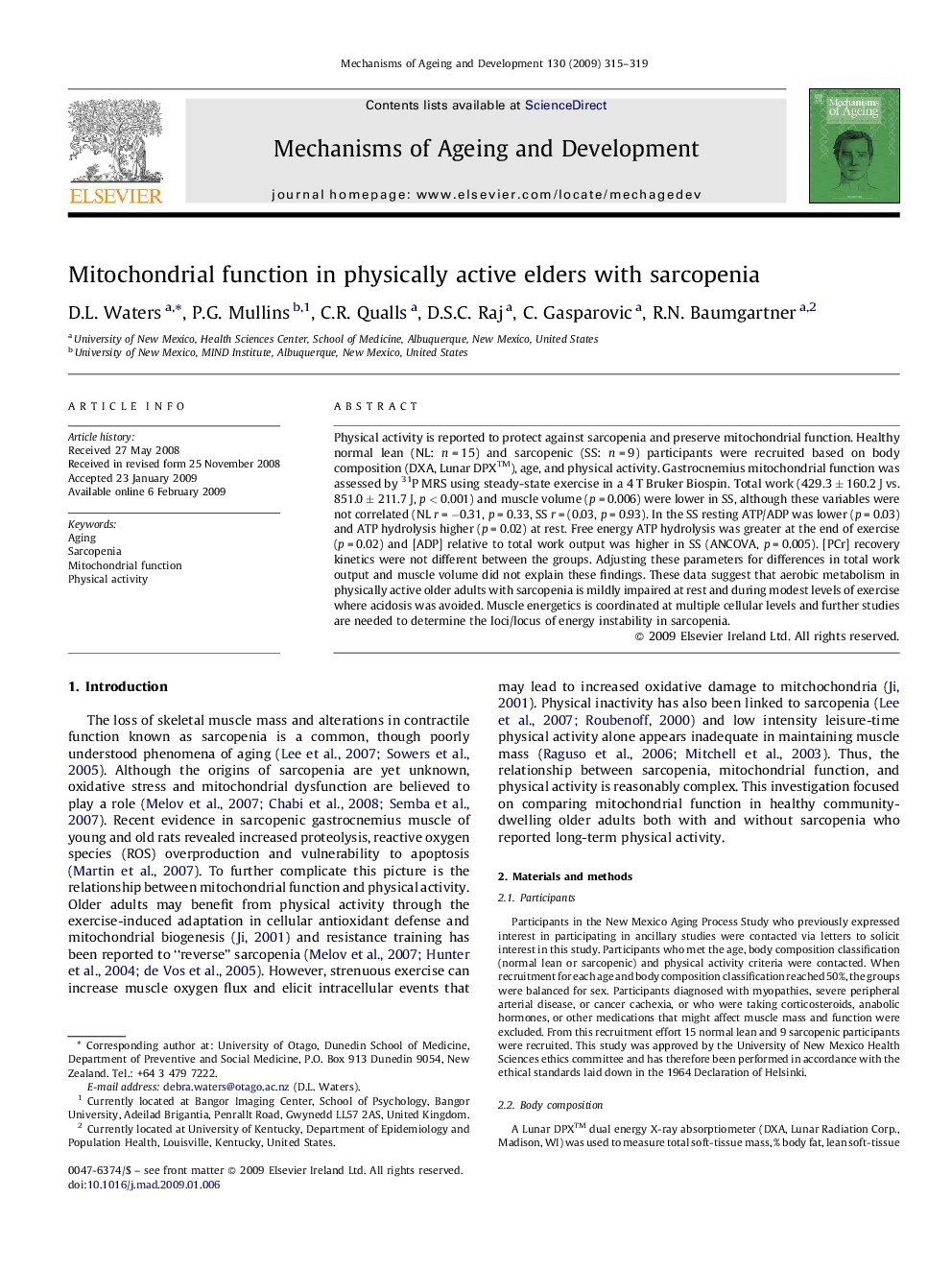| Article ID | Journal | Published Year | Pages | File Type |
|---|---|---|---|---|
| 1919716 | Mechanisms of Ageing and Development | 2009 | 5 Pages |
Physical activity is reported to protect against sarcopenia and preserve mitochondrial function. Healthy normal lean (NL: n = 15) and sarcopenic (SS: n = 9) participants were recruited based on body composition (DXA, Lunar DPX™), age, and physical activity. Gastrocnemius mitochondrial function was assessed by 31P MRS using steady-state exercise in a 4 T Bruker Biospin. Total work (429.3 ± 160.2 J vs. 851.0 ± 211.7 J, p < 0.001) and muscle volume (p = 0.006) were lower in SS, although these variables were not correlated (NL r = −0.31, p = 0.33, SS r = (0.03, p = 0.93). In the SS resting ATP/ADP was lower (p = 0.03) and ATP hydrolysis higher (p = 0.02) at rest. Free energy ATP hydrolysis was greater at the end of exercise (p = 0.02) and [ADP] relative to total work output was higher in SS (ANCOVA, p = 0.005). [PCr] recovery kinetics were not different between the groups. Adjusting these parameters for differences in total work output and muscle volume did not explain these findings. These data suggest that aerobic metabolism in physically active older adults with sarcopenia is mildly impaired at rest and during modest levels of exercise where acidosis was avoided. Muscle energetics is coordinated at multiple cellular levels and further studies are needed to determine the loci/locus of energy instability in sarcopenia.
